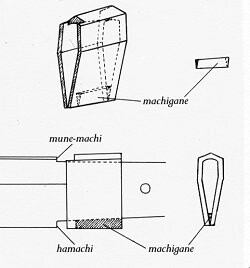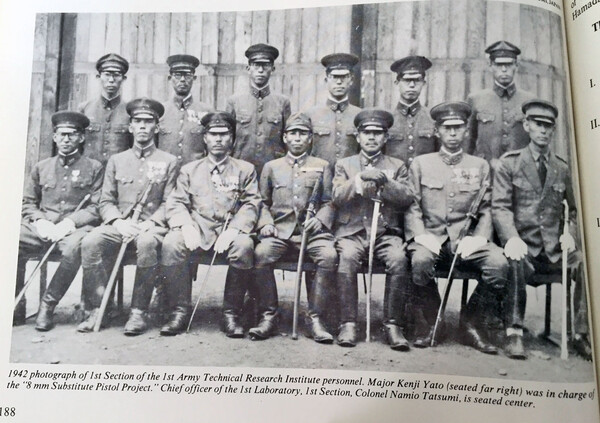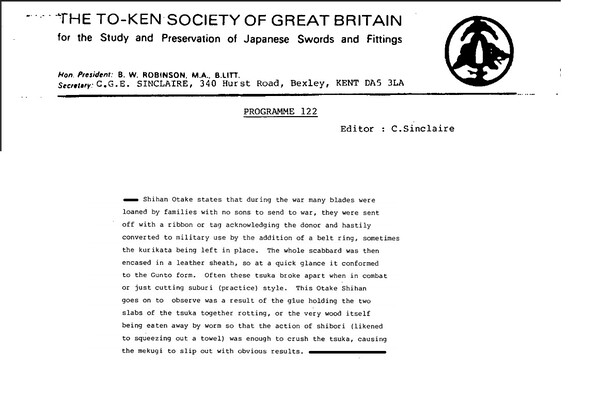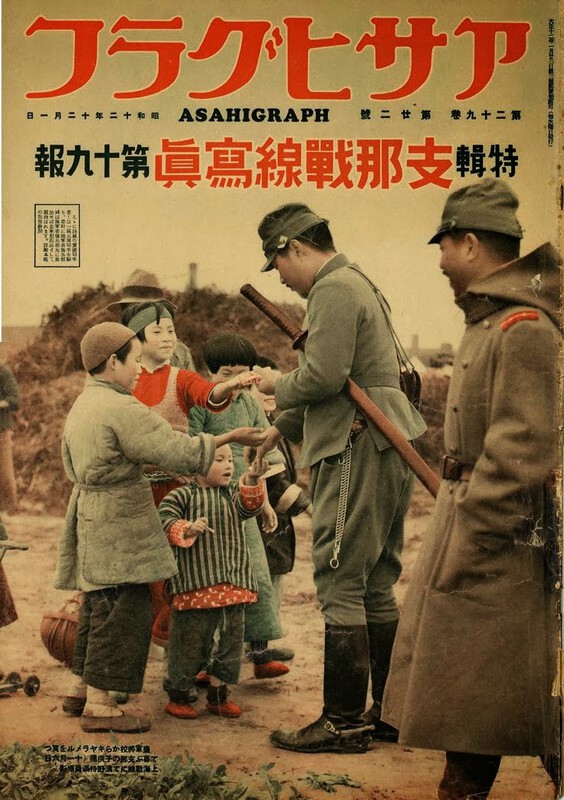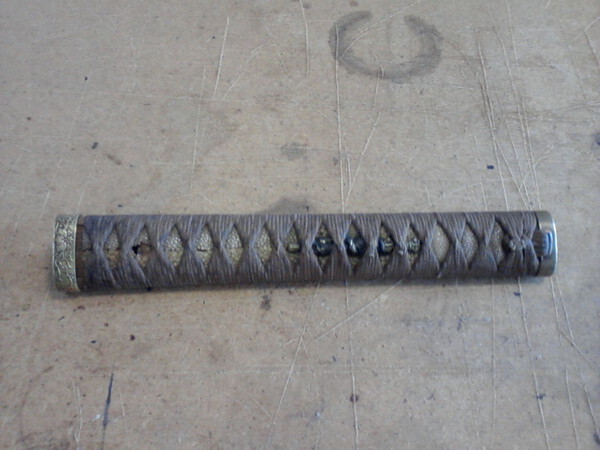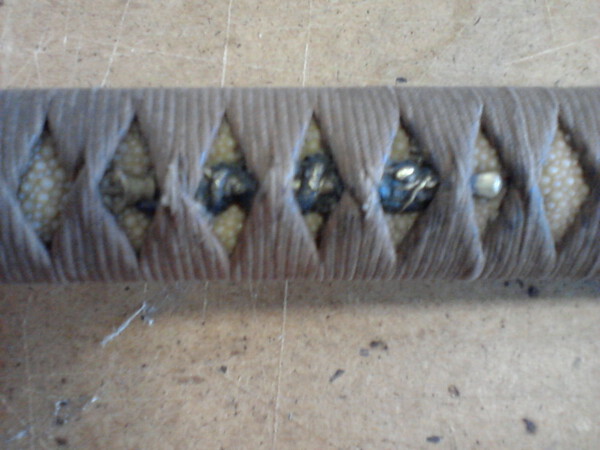-
Posts
1,690 -
Joined
-
Last visited
-
Days Won
11
Content Type
Profiles
Forums
Events
Store
Downloads
Gallery
Everything posted by Dave R
-
Some time ago the question arose as to what a Shin-Gunto cost in real terms, given questions like inflation and the cheaper real cost of labour back then. It took a bit of research, but in current money they cost an officer in the IJA around £800, or $1047, and there were still bottlenecks due to price controls and inflation making the official cost unrealistic... The Rinji Seishiki was the result of attempts to get costs down. The blade is only part of the story, The metal mounts need a lot of hand finishing, the tsuka needs to be hand cut in Honoki to hold the nakago properly, and the Ito-maki is another time consuming job. It generally takes me four hours of concentrated work, and I can see why the Rinji has a different wrap. As for the metal saya and a wooden liner............ The point is, that a good accurate copy is going to cost the same!
-

Info needed on the classification on this sword/blade
Dave R replied to Runt's topic in Military Swords of Japan
It's to do with how the habaki is made. Most Chinese habaki are cast brass and without a machigane, to compensate for this they cut the machi at different levels.- 16 replies
-
- 3
-

-
- translation
- gunto
-
(and 1 more)
Tagged with:
-
The question that keeps popping up is, are you buying a piece of militaria, or are you buying a nihonto... The two are judged by very different parameters, Then if you really want to go there, will it get me my money back if I sell it on?
-
The problem with the closed hole (Sarute-ana?) is that there is then no way of attaching an officers sword knot..... I wonder if the tsuka has been shortened?
-
Nothing wrong with the colour of the ito, but the end knots are very poor. Of more concern to me is that the kabuto-gane does not look to be pierced for a sarute!
-
Given the location of PNG there is no reason why that could not be an actual Shin-Gunto.
-
I am inclined to agree, the fuchi-kashira on my example are thin stamped brass... nice menuki though as far as can be seen. One day perhaps a catalogue will turn up with prices. I increasing suspect that they are just civilian mounts for Showa era katana, pressed into service when the owner got drafted.
-
Shōwa (1926–1989) https://en.wikipedia.org/wiki/Sh%C5%8Dwa_(1926%E2%80%931989)
-
Most 19thC military swords had the same problem when dealing with thick winter clothing. A friend of mine thinks the problem was a change in sharpening methods from file sharpening to stone sharpening, (NB not Japanese style stoning). File sharpening gives a "feather edge" possibly the zig-zag mentioned above, which is a good ripping edge, especially effective on cloth.
-
Do you mean Showa era civilian, rather than earlier? I have an example I own myself, and pictures of others I don't. Some of them garnered from here. And, here is my own example...... The menuki look to be nice old ones though.
-

Purchased a Type 19 Army Sword Last Night
Dave R replied to MacTheWhopper's topic in Military Swords of Japan
Looking at the photo's I would say you did OK. Shin Gunto go for a lot more, and this style don't fetch as much..... But just as a decent condition late 19th-early 20th century military officers sword of any nation, this was something of a bargain. Probably helped by the fact that most people looking for a Japanese officers sword would pass over it, as they were looking for a "Samurai sword". As you can see in the pic' below, Japanese officers carried a variety of patterns of sword during the war. -
Has anyone ever seen coins used as Menuki. There are, believe it or not, replica "Satsuma Rebellion" swords for sale, and they use old style Chinese or Japanese coins as menuki, rather than the rovings or washers we see on the real thing. So what I ask, having seen some very odd things indeed used as menuki on genuine Nihonto... has anyone ever seen coins, antique or modern used on real Japanese swords of any date? Further, what are the oddest or most original things anyone has seen as Menuki on a genuine piece? Personally I have handled a "Satsuma sword" that used flattened military buttons as menuki, and on the 'net a Katana with Jomon era flint arrowheads used as such.
-
A quick google took me here... https://www.tokkin.com/materials/special_steel/special_steel so I think your Tokushu Hagane is simply this firms sword steel during the war.
-

Literature about resistance tests on WW2 blades
Dave R replied to Bruno's topic in Military Swords of Japan
.... And an interesting thread here.... https://sbg-sword-forum.forums.net/thread/21441/shin-gunto-blades-todays-factory -

Literature about resistance tests on WW2 blades
Dave R replied to Bruno's topic in Military Swords of Japan
There is a LOT of stuff here, if you are not familiar with the site. Not all of it germane to Shin-Gunto, but much of it of interest. http://www.nihontocraft.com/japanese_sword_articles.html -
Interesting and germane to another thread. Here we have a koshira with Showa stamped and cast f/k and tsuba, but evidently very nice and old menuki.
-
Not at all uncommon, and there is probably something of a survival bias in that old "Samurai" swords would be seen as more desirable as souvenirs, and also saved from destruction by the concept of being an art or traditional sword, rather than a weapon of war. The sword shortage as covered in detail by Mr Komiya, and I add a couple of pic's, one of which explains their existence and the other shows one in wear.
-
They do turn up, I have an Edo period Wakizashi or Tanto Tsuka, lacquered Ito, and no menuki.
-
-
If you look around you can pick up decent, genuine menuki at reasonable prices, and if you go for mismatched (which I have seen on real pieces) you can get them damn cheaply. Why bother with tat?
-
Practically speaking there is nothing wrong with an oil tempered blade, or even one made with a modern (for that time) factory steel. I would really like to read a contemporary WW2 military man's opinion on the relative merits of traditional v's modern steel. I do know that one smith's production was almost entirely spring tempered high carbon steel, and they were popular with Imperial Guard officers, who certainly had a choice. It depends on what you wanted I suppose, and art object or a weapon.
-

Hizen Munetsugu with Kai-Gunto Modification
Dave R replied to Death-Ace's topic in Military Swords of Japan
There is a a "sort of legend" that when you have a sword with mixed style Army/Navy fittings, that it was for the Naval Landing Force! Like I say, a sort of legend that has turned up on other Gunto threads and forums. My bet would be that there were issues with lacquering the Same, it is a time consuming process and involves special skills and is preferably done at certain times of the year only. Pressure of time (and money) probably accounts for most of the oddities we see on Gunto. -
I would say a genuine Japanese blade, but very worn and possibly a victim of amateur "cleaning".


